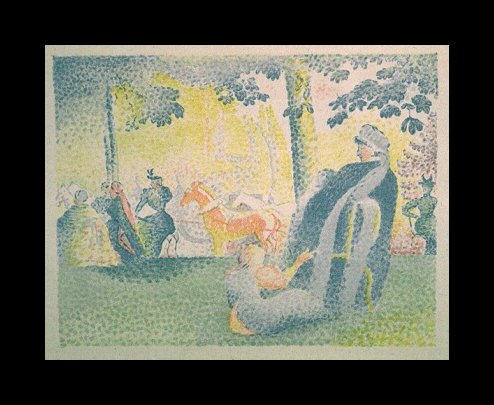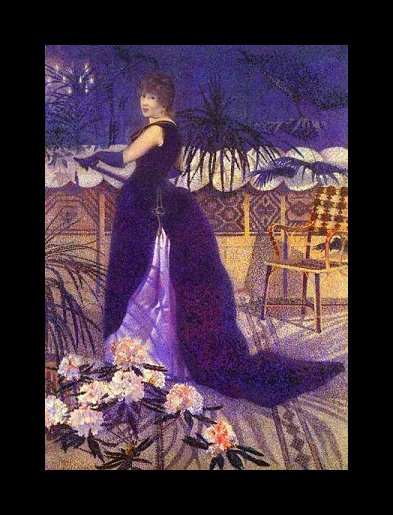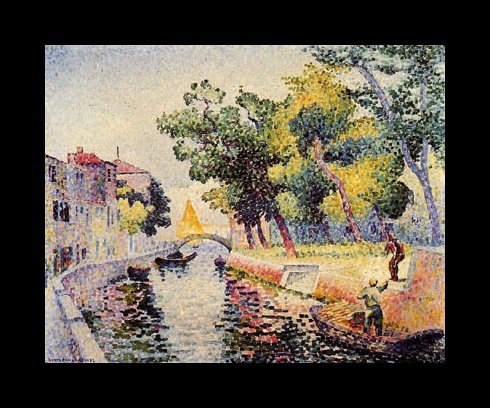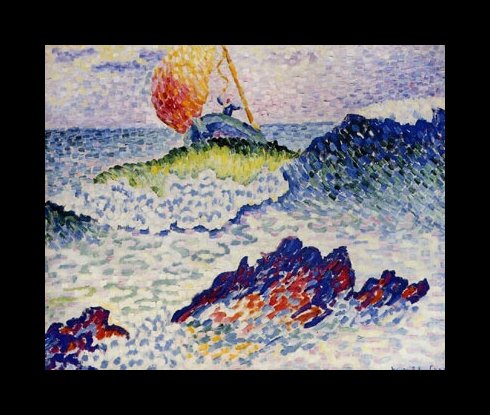Henri Edmond Cross (1856-1910)
Get a Cross Certificate of Authenticity for your painting (COA) for your Cross drawing.
For all your Cross artworks you need a Certificate of Authenticity (COA) in order to sell, to insure or to donate for a tax deduction.
Getting a Cross Certificate of Authenticity (COA) is easy. Just send us photos and dimensions and tell us what you know about the origin or history of your Cross painting or drawing.
If you want to sell your Cross painting or drawing use our selling services. We offer Cross selling help, selling advice, private treaty sales and full brokerage.
We have been authenticating Cross and issuing certificates of authenticity since 2002. We are recognized Cross experts and Cross certified appraisers. We issue COAs and appraisals for all Cross artworks.
Our Cross paintings and drawings authentications are accepted and respected worldwide.
Each COA is backed by in-depth research and analysis authentication reports.
The Cross certificates of authenticity we issue are based on solid, reliable and fully referenced art investigations, authentication research, analytical work and forensic studies.
We are available to examine your Cross painting or drawing anywhere in the world.
You will generally receive your certificates of authenticity and authentication report within two weeks. Some complicated cases with difficult to research Cross paintings or drawings take longer.
Our clients include Cross collectors, investors, tax authorities, insurance adjusters, appraisers, valuers, auctioneers, Federal agencies and many law firms.
We perform Henri Edmond Cross art authentication, appraisal, certificates of authenticity (COA), analysis, research, scientific tests, full art authentications. We will help you sell your Henri Edmond Cross or we will sell it for you.
Henri Edmond Cross was born in Douai in Northern France and grew up in Lille. He had a British Mother and a French Father. He was encouraged by his Father’s cousin to paint, and he studied at the Ecole des Beaux Arts. He also studied in Paris with the artist Emile Dupont-Zipcy. Henri’s name at birth was Henri Delacroix, and to avoid being confused with the painter Eugene Delacroix, he adopted the English surname of Cross.




His early works were portraits. He used dark colours and he painted in the realist style. However, this was to all change with a meeting with Claude Monet in 1883. After meeting Monet, he began to change the colours that he used and was also to change his style.
He was one of the founders of the Salon des Independants in 1884. It was there that he met Paul Signac, and together with him became one of the leading exponents of Neo Impressionism or Pointillism as it is sometimes known. In 1891, he moved to Saint Clair in the South of France, near St. Tropez. Paul Signac was also to move to Saint Clair in 1891. Henri Cross stayed in Saint Clair for the rest of his life, but traveled annually to Paris for the Salons.

It was in the 1890s, that Cross was to paint and develop his Neo Impressionist style. In this period he concentrated mostly on Seascapes and scenes of peasants at work. Like other members of the Neo Impressionist group, he had utopian and anarchist leanings. He contributed illustrations to the anarchist publication, ‘The Wanderer’. His famous painting, ‘Air of the Evening’, which hangs in the Musee d’Orsay is said to reflect his anarchist sentiments. Another example of a painting which was produced in the style of Neo Impressionism is, ‘Evening Breeze,’ which also hangs in the Musee d’Orsay.
His artistic output was hampered throughout his life by continual health problems, such as serious bouts of arthritis, and eye problems. His paintings can be found in museums all over the world, such as the Metropolitan Museum of Art in New York and the Hermitage Museum in St Petersburg.



Other Neo Impressionists of the day include, Albert-Dubois Pillet, Louis Hayet and Leo Gausson. Leo Gausson, in particular, was an interesting character. Gausson initially studied engraving in Paris. In the mid 1870s, he entered the print shop of Eugene Froment. It was here that he met Maximilien Luce, with Luce he experimented with colour theories and became one of the exponents of Neo Impressionism. He also produced wood carvings.
However, in 1896, Gausson abandoned painting to concentrate on poetry. He published an anthology of verse, as well as illustrating poetry books by other poets. He spent the years between 1901, and 1908, in Africa where he was a Colonial Administrator.
Albert-Dubois Pillet was another Neo Impressionist who had several different careers, as well as being an artist, he was an Officer in the French army, where he fought in the Franco Prussian War. He was captured by the German army and was held prisoner. When released, he took up a career as an artist and began painting in the Neo Impressionist style and was also one of the founders of the Salon des Independants in Paris.
If you believe you own a work of art by Henri Edmond Cross, contact Art Certification Experts. We authenticate, appraise, research and provide Certificates of Authenticity (COA's) for works by Henri Edmond Cross.
Reviews
1,217 global ratings
5 Star
4 Star
3 Star
2 Star
1 Star
Your evaluation is very important to us. Thank you.
